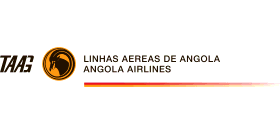 TAAG Angola Airlines Welcomes Third Dreamliner, Marking Fleet Modernisation Milestone
TAAG Angola Airlines Welcomes Third Dreamliner, Marking Fleet Modernisation Milestone
TAAG Angola Airlines has celebrated a major step in its fleet renewal strategy with the arrival of its first Boeing 787-10 Dreamliner, bringing the airline’s total Dreamliner count to three. This significant milestone comes hot on the heels of the delivery of two Boeing 787-9 aircraft earlier in the year, signaling a dynamic phase of transformation for the Angolan flag carrier. The new aircraft, named Okavango, touched down in Luanda as Angola proudly marks its 50th year of independence—a timely and symbolic moment for both the airline and the nation.
The introduction of the 787-10 is a testament to TAAG’s commitment to modernising its long-haul fleet and enhancing its international profile. The Dreamliner family is renowned for its advanced technology, fuel efficiency, and passenger comfort, placing TAAG among the leading African airlines embracing the latest generation of widebody jets. This strategic investment allows the airline to strengthen its competitive position in the region, offering passengers a world-class travel experience on intercontinental routes.
The arrival of Okavango aligns with TAAG’s wider ambitions to expand its network reach and improve service quality on high-demand routes. With the enhanced performance and range of the 787-10, TAAG is better positioned to pursue new destinations and increase frequencies on existing long-haul services, connecting Angola more seamlessly with key global markets. This development is particularly relevant for African travel sector professionals, as it underscores the growing capacity and aspirations of African carriers to compete on the international stage.
The modernisation of TAAG’s fleet offers a range of benefits for both the airline and its customers. The Dreamliner’s cutting-edge design translates into lower operating costs, greater reliability, and a reduced environmental footprint. Passengers can look forward to a superior in-flight experience, including quieter cabins, improved air quality, and enhanced comfort—factors that are increasingly important to discerning travelers. Such improvements are expected to raise the airline’s appeal in both corporate and leisure travel segments, supporting Angola’s broader tourism and economic development goals.
The symbolic timing of Okavango’s arrival—coinciding with Angola’s 50th independence anniversary—serves as a powerful reminder of the nation’s progress and ambition. For TAAG, it represents both a nod to the past and a bold step towards the future, reinforcing the airline’s role as a key driver of national pride and connectivity. The name Okavango pays tribute to Africa’s rich natural heritage, reflecting TAAG’s commitment to representing the continent’s diversity and vitality on the global aviation map.
From a business perspective, the addition of the 787-10 opens new possibilities for TAAG’s commercial strategy. The aircraft’s capacity and efficiency allow the airline to explore new long-haul markets, forge stronger partnerships, and capture a larger share of international traffic. This is particularly significant at a time when African carriers are increasingly seeking to assert their presence in the global aviation sector, leveraging modern fleets and innovative service offerings to attract travelers and business partners alike.
The continued expansion and renewal of TAAG’s fleet are also expected to generate positive ripple effects across the Angolan and wider African aviation ecosystem. The airline’s investment in advanced aircraft supports local job creation, skills development, and technology transfer, while contributing to the growth of supporting industries such as airport operations, maintenance, and tourism. For the African travel industry, these developments highlight the importance of continuous innovation and adaptation in a rapidly evolving market.
As TAAG takes delivery of Okavango, the airline sets a strong example for others in the region, demonstrating the value of bold investment in fleet renewal and network expansion. The presence of three Dreamliners within its ranks is a clear signal of TAAG’s intent to play a leading role in shaping the future of African aviation, offering African travelers and global partners new levels of reliability, comfort, and connectivity.
Looking ahead, TAAG’s growing Dreamliner fleet promises to drive further enhancements to the airline’s product and service offering, supporting Angola’s emergence as a key gateway in the region. For industry professionals across sub-Saharan Africa, TAAG’s progress is a timely reminder of the opportunities and challenges that come with building a world-class airline—opportunities that promise to reshape the landscape of air transport across the continent in the years to come.
